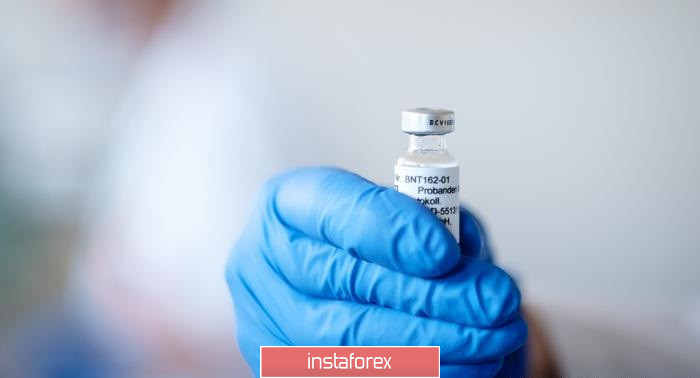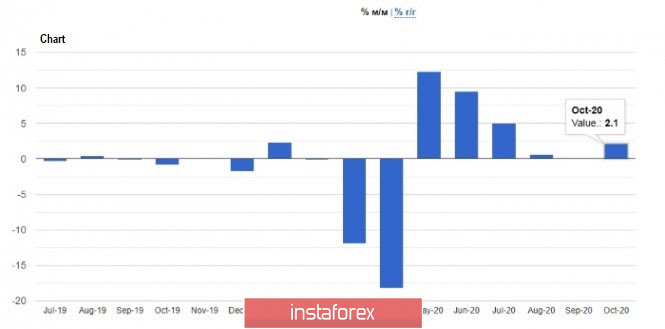The euro is trading in a narrow sideways channel, and it seems that traders are in no hurry to increase long positions despite the news that COVID-19 vaccination has begun in the United States. The drug developed by Pfizer is expected to arrive in many US hospitals today, but the first 3 million doses will be strictly rationed and distributed among medical workers and elderly patients who are most at risk of complications from the virus. Nonetheless, hundreds of millions of Americans are projected to be vaccinated in the coming months.

The US Food and Drug Administration will also publish its analysis on the COVID-19 vaccine developed by Moderna. If the FDA advisers give a positive recommendation on Thursday, the agency could give the green light to the vaccine.
But in the meantime, the enthusiasm of euro bulls have dropped after the ECB meeting last week, during which the members decided to increase the volume of their Emergency Asset Purchase Program (PEPP) by € 500 billion, and extended its operation until March 2022. Such made investors realize that negative interest rates, large bond purchase program and negative yields in the euro zone will persist for a rather long period of time, at least until the economy is fully restored to the pre-crisis values, which can take years.
Meanwhile, with regards to economic reports, data on the eurozone's industrial production was published, and it indicated a good growth in October, which increases the chance that rates will be quite high in November this year, especially since the partial lockdown of the EU economy affected the service sector more.

According to Eurostat, the index jumped 2.1% in October, but in annual terms fell by 3.8%. Economists had expected the index to rise 2% and decline 4.4%, respectively.
As for the EUR/USD pair, movement will depend on whether the quote manages to consolidate above 1.2165 or not. Moving past this level will make it easier for the euro to reach 1.2250 and 1.2340, but if the quote returns below 1.2060, the EUR/USD pair will collapse to 1.1980 and then to 1.1890.
GBP/USD: Yesterday, both the UK and the EU decided to continue negotiations on Brexit, which supported the British pound. Rumors also say both parties have allegedly found an understanding on how much the UK should be tied to the EU, which led to the strengthening of the pair in the morning. However, the enthusiasm quickly faded, so the pound returned to a more fair price area. Now, it will move depending on whether the quote breaks out of 1.3340 or not, as only going beyond which will the quote be able to reach 1.3390 and 1.3490. But if the pair goes below 1.3245 again, the pound will collapse to 1.3190 and then to 1.3140.
AUD/USD: The Australian dollar declined after the Reserve Bank of Australia said further economic growth will be uneven and prolonged. This means that GDP will take longer to return to pre-pandemic levels, especially since the RBA expects a long period of high unemployment and low wage growth. Inflation will also remain low for several years, leading to continued monetary and fiscal stimulus for quite some time.
Against this background, the AUD/USD pair dropped from 0.7576 to 0.7510, and a breakout from this range will lead to a deeper collapse to 0.7480 and 0.7425. But if the aussie returns to 0.7545, the AUD/USD pair may move up to 0.7580 and then to 0.7610.





















